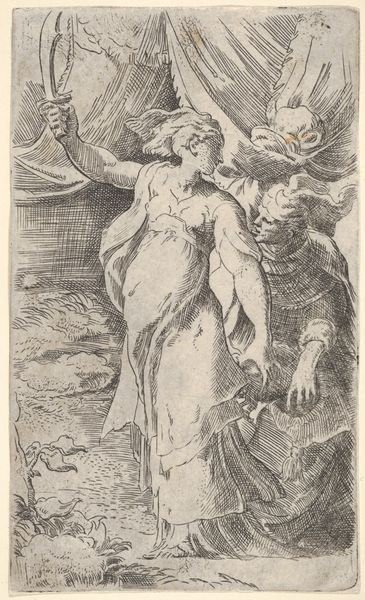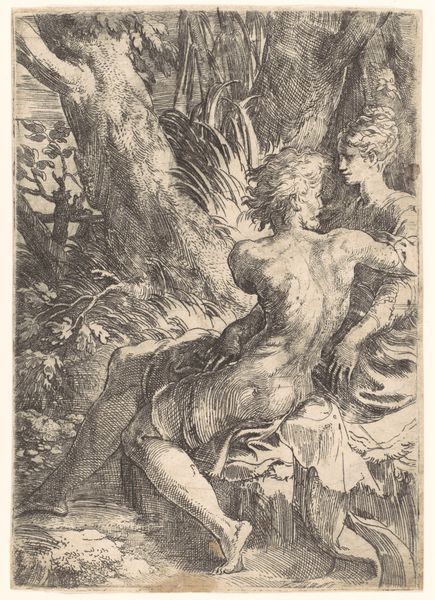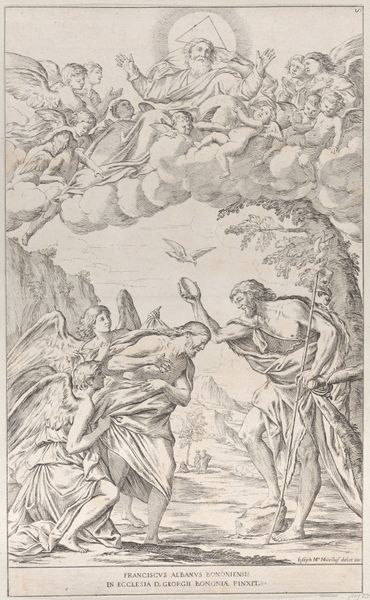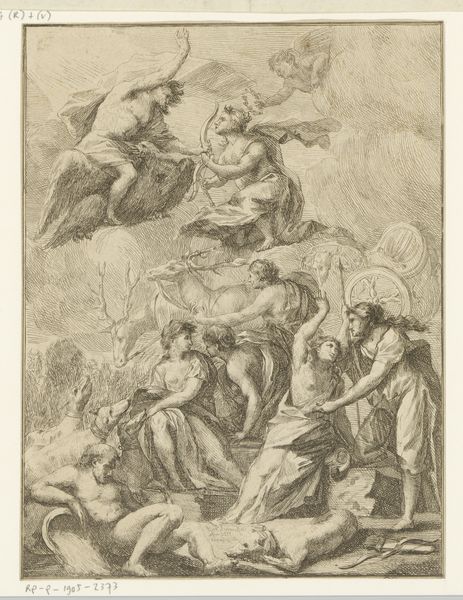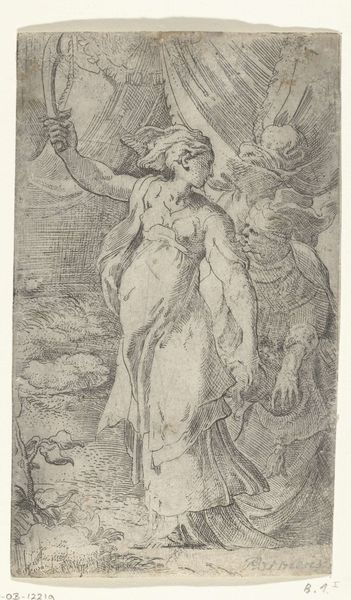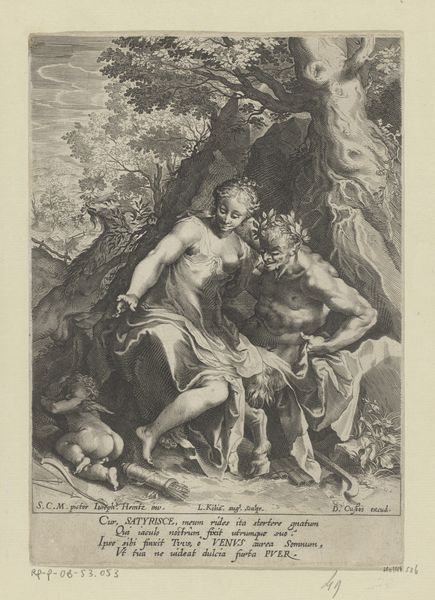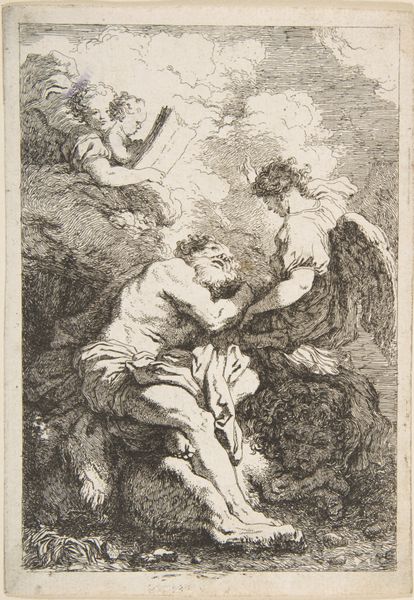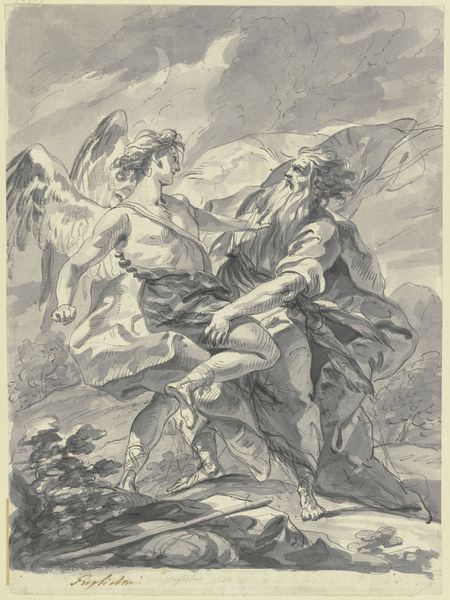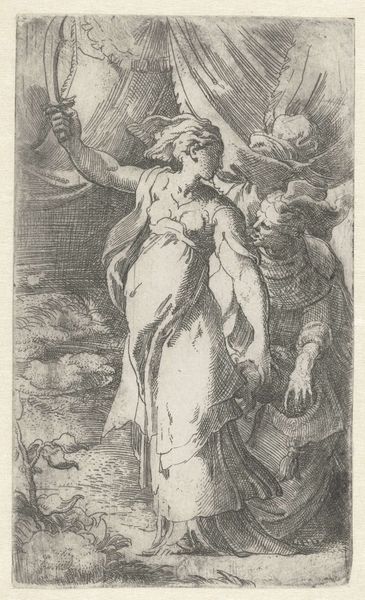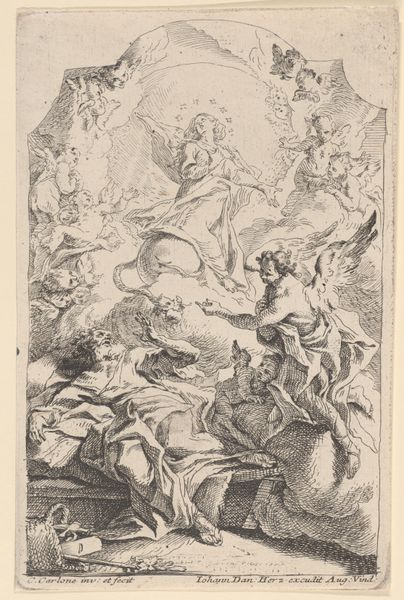
drawing, ink
#
drawing
#
light pencil work
#
baroque
#
pen sketch
#
pencil sketch
#
figuration
#
personal sketchbook
#
ink
#
ink drawing experimentation
#
pen-ink sketch
#
pen work
#
sketchbook drawing
#
pencil work
#
history-painting
#
nude
#
sketchbook art
Dimensions: height 175 mm, width 132 mm
Copyright: Rijks Museum: Open Domain
Editor: We are looking at "Maria Magdalena met engelen", or Mary Magdalene with Angels, an ink drawing made sometime between 1659 and 1700 by Godfried Maes. The figure of Mary Magdalene is so central; it’s immediately striking how Baroque dynamism is captured in this relatively small pen-ink sketch. What story is being told here, and how does it fit into the bigger picture of the artist's career and the art world at that time? Curator: The drama is unmistakable, isn't it? Consider how the Church, especially during and after the Counter-Reformation, used images to shape narratives around repentance and salvation. This Magdalene is less about individual faith and more a public-facing exemplar of penitence, meant to instruct viewers on moral conduct. How do you think the style, like the Baroque drama you noticed, contributes to this propagandistic role? Editor: Well, the angels swirling around her, the strong diagonal composition, and the incredibly theatrical lighting definitely amplify the emotional intensity, encouraging a more visceral reaction, wouldn't you say? Curator: Precisely. And notice how the artist situates her with these traditional signifiers – skull, ointment jar. Are these symbols meant to reinforce her identity or to serve as tools for moral persuasion in that period? Editor: I suppose they serve both purposes, depending on the viewer's existing knowledge of Magdalene's story and what the patrons hoped to communicate. It makes you consider the multiple layers of intended audiences the artist, and particularly the patron, might have been playing towards. Thank you; I now appreciate this artwork on so many new dimensions! Curator: And for me, it's a reminder that religious art isn't just about spirituality, but also the intricate dance between artistic expression, political agenda, and public consumption in its era.
Comments
No comments
Be the first to comment and join the conversation on the ultimate creative platform.
